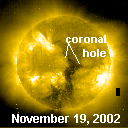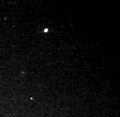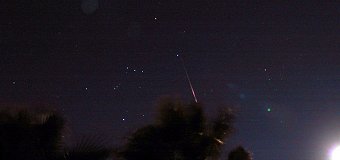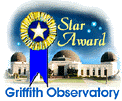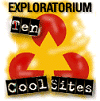|
learn more about SpaceWeather PHONE |
|
Coronal
Holes:
Interplanetary Mag.
Field NOAA Forecasts Solar Flares: Probabilities for a medium-sized (M-class) or a major (X-class) solar flare during the next 24/48 hours are tabulated below. Updated at
Geomagnetic Storms: Probabilities for significant disturbances in Earth's magnetic field are given for three activity levels: active, minor storm, severe storm Updated at
High latitudes
|
Hazardous Asteroids
|
learn more about SpaceWeather
PHONE
| Essential Web Links |
|
NOAA Space Environment Center -- The official U.S. government bureau for real-time monitoring of solar and geophysical events, research in solar-terrestrial physics, and forecasting solar and geophysical disturbances. Solar and Heliospheric Observatory -- Realtime and archival images of the Sun from SOHO. (European Mirror Site) Daily Sunspot Summaries -- from the NOAA Space Environment Center. Recent Solar Events -- a nice summary of current solar conditions from lmsal.com. SOHO Farside Images of the Sun from SWAN and MDI. The Latest SOHO Coronagraph Images -- from the Naval Research Lab The Sun from Earth -- daily images of our star from the Big Bear Solar Observatory List of Potentially Hazardous Asteroids -- from the Harvard Minor Planet Center. Observable Comets -- from the Harvard Minor Planet Center. What is the Interplanetary Magnetic Field? -- A lucid answer from the University of Michigan. See also the Anatomy of Earth's Magnetosphere. Real-time Solar Wind Data -- from NASA's ACE spacecraft. More Real-time Solar Wind Data -- from the Solar and Heliospheric Observatory Proton Monitor. Aurora Forecast --from the University of Alaska's Geophysical Institute Daily Solar Flare and Sunspot Data -- from the NOAA Space Environment Center. Lists of Coronal Mass Ejections -- from 1998 to 2001 Vandenberg AFB missile launch schedule. What is an Astronomical Unit, or AU? NOAA Solar Flare and Sunspot Data: 1999; 2000; Jan-Mar, 2001; Apr-Jun., 2001; Jul-Sep., 2001; Oct-Dec., 2001; Jan-Mar., 2002; Apr-Jun., 2002; Jul-Sep., 2002; Oct-Dec., 2002; |
 SPACE WEATHER
SPACE WEATHER
